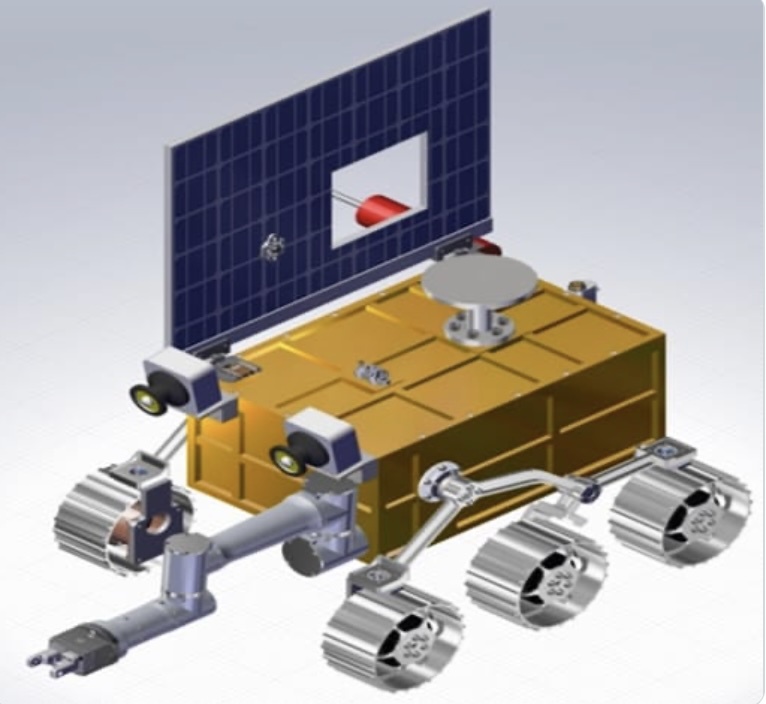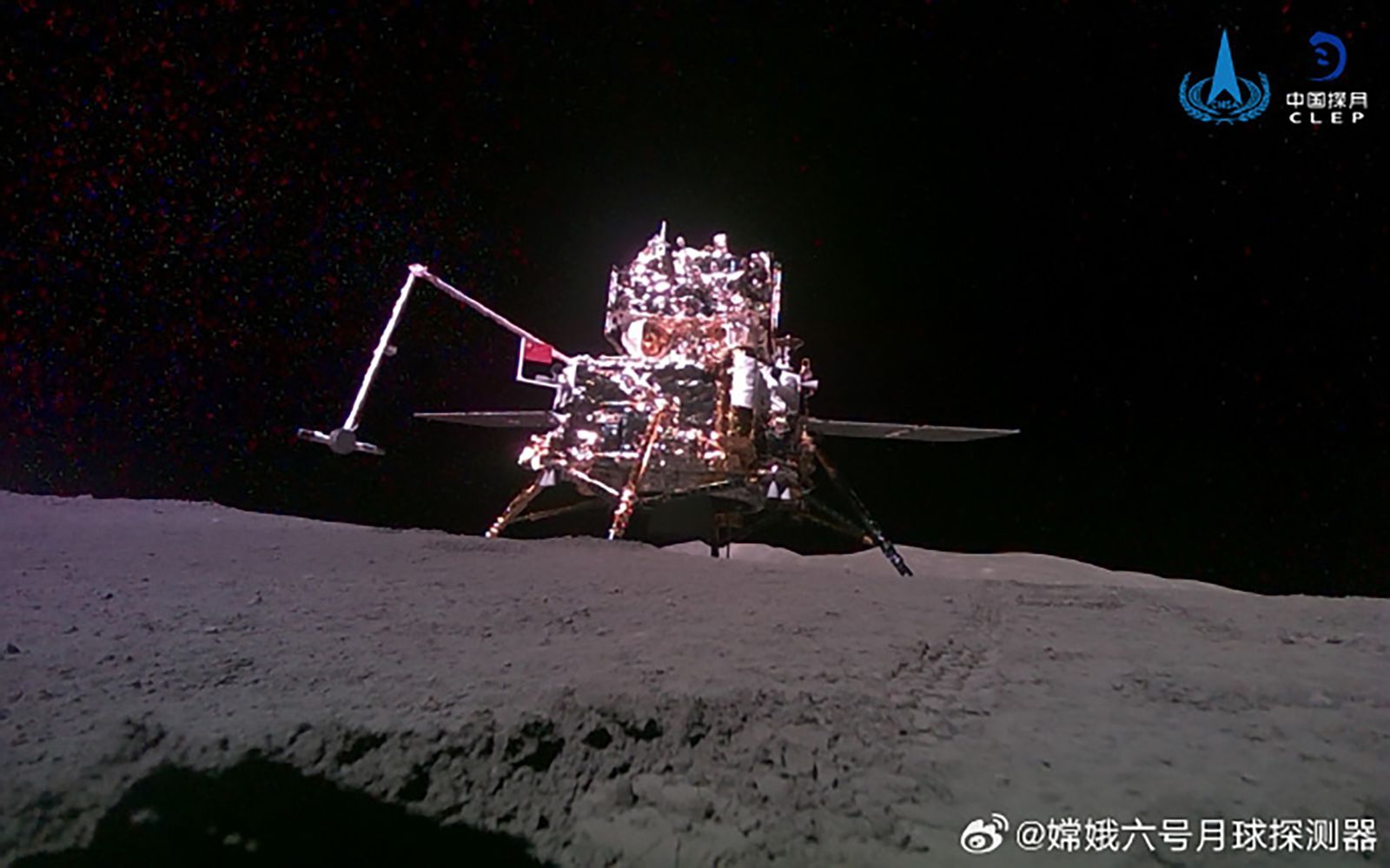12.02.2025
Pakistan rover to fly on China’s Chang’e-8 lunar south pole mission

HELSINKI — A Pakistan-developed rover will fly on China’s Chang’e-8 moon lander mission in 2028, following an agreement between respective agencies.
The China National Space Administration (CNSA) and Space and Upper Atmosphere Research Commission (Suparco) signed a Memorandum of Understanding Feb. 5 allowing Pakistan’s first rover to fly on Chang’e-8. An agreement in principle had been announced late last year and was formally finalized during Pakistan President Asif Ali Zardari’s visit to China last week.
The rover will have a mass of around 35 kilograms and carry science payloads for studying lunar soil composition, radiation levels, plasma properties and testing new technologies for sustainable human presence on the Moon. It will also feature a collaborative scientific payload developed by Chinese and European researchers.
“This collaboration marks a significant milestone for Pakistan’s space programme, as Suparco’s indigenous rover will be part of the mission to explore the lunar surface,” said a press release issued by the commission, as reported by the Express Tribune.
A joint statement between the People’s Republic of China and the Islamic Republic of Pakistan Feb. 6 noted that the “two sides expressed satisfaction at the existing level of cooperation in space and agreed to advance and pursue further progress in this important area for socio-economic purpose.”
The rover will take up part of 200 kilograms of payload space made available on Chang’e-8 for international cooperation via a 2023 announcement of opportunities.
Chang’e-8
Chang’e-8 and next year’s Chang’e-7 lunar south pole missions are precursors to the construction of the ILRS, starting in the 2030s.
The Chang’e-8 mission will include a Chinese rover, along with the Pakistan rover and two microrovers, and a robot. The latter could be designed to perform in-situ resource utilization test mission objectives as part of plans to build the China-led International Lunar Research Station (ILRS) moon base project.
Regions around Leibnitz Beta, Amundsen crater, Cabeus crater and the Shackleton-de Gerlache Ridge at the lunar south pole are cited as preliminary landing sites for Chang’e-8.
The mission lander will carry 10 science payloads. These include landing and topography cameras, a seismometer, moon-based Earth radiometer and multispectral imager, a soft X-ray telescope and other payloads along with the ecosystem and ISRU instruments.
Pakistan and ILRS
It is not the first lunar collaboration between China and Pakistan. Last year the Chang’e-6 lunar far side sample return mission carried Icube-Q, a cubesat developed jointly by Pakistan and China’s Shanghai Jiao Tong University. Broader cooperation saw China launch Pakistan’s PRSC-EO1 remote sensing satellite last month.
Pakistan is also a participant in the ILRS, thus paving the way to the rover flying on Chang’e-8. Other ILRS members, such as Türkiye, are involved, jointly developing a pair of 5-kilogram rovers for the same mission. Notably, that will involve cooperation between a university in Türkiye, Zhejiang University and STAR.VISION, the first commercial entity to be accepted for involvement in a Chinese lunar mission.
Thailand, another ILRS partner, will have an indigenous global space weather monitoring payload aboard the 2026 Chang’e-7 mission.
Russia, Venezuela, Belarus, Pakistan, Azerbaijan, South Africa, Egypt, Nicaragua, Thailand, Serbia and Kazakhstan and Senegal have signed agreements and MoUs regarding the ILRS as national-level participants, while Türkiye is reported to have applied and is active in the program.
A range of subnational entities, including companies, associations and universities, have also joined ILRS. These include groups and firms from Switzerland, the United Arab Emirates, Panama, Indonesia, Kenya, Ethiopia, Kyrgyzstan, Croatia, Sri Lanka, Hawaii and Oman.
Quelle: SN
----
Update: 25.04.2025
.
China to launch Chang'e-8 lunar mission around 2029, collaborating with int'l partners

The China National Space Administration (CNSA) revealed Thursday that the Chang'e-8 lunar probe is scheduled for launch around 2029, and will carry payloads from 11 countries and regions and one international organization as part of international cooperation.
The announcement was made at the opening ceremony for 2025 Space Day of China, which is celebrated annually on April 24.
The Chang'e-8 mission will target the Leibnitz-Beta Plateau near the lunar south pole region, working with the earlier Chang'e-7 mission to conduct scientific exploration and in-situ resource utilization experiments. These efforts will lay the groundwork for the future International Lunar Research Station.
According to CNSA, the 10 selected collaborative projects include a multi-functional robot designed by researchers in Hong Kong, a lunar rover developed by Pakistan and the International Society for Terrain-Vehicle Systems (ISTVS), an exploration rover made by Türkiye, and radio astronomical instruments by South Africa and Peru.
The projects also include Italy's laser retroreflector arrays, Russia's plasma and dust analyzer and high-energy particle detector, Thailand's neutron analyzer, Bahrain and Egypt's lunar surface imaging system, and Iran's lunar potential monitor.
Shan Zhongde, head of CNSA, said China will work closely with international partners to achieve new scientific discoveries and technological breakthroughs that will ultimately benefit all of humanity.
CNSA announced in October 2023 international cooperation opportunities for Chang'e-8 lunar mission, which offered 200 kilograms of payload resources for global partners. A total of 41 cooperation proposals were received.
Quelle: Xinhua
